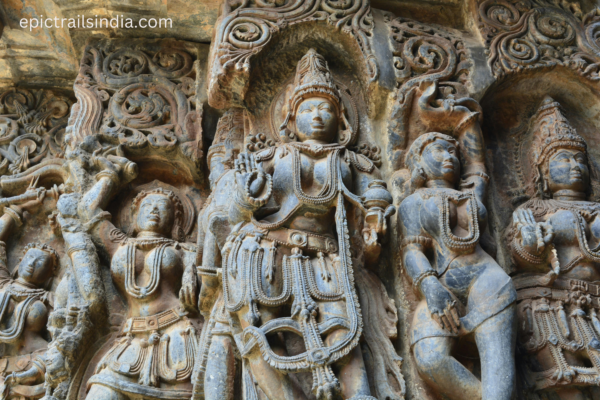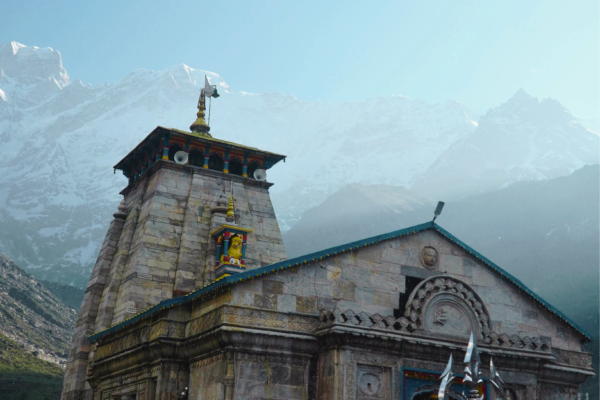The northern landscapes of India are dotted with spires that reach towards the heavens, encapsulating the essence of Nagara temple architecture. Unlike its Dravidian counterpart, Nagara architecture eschews elaborate boundary walls and expansive courtyards, focusing instead on the vertical ascent of its structures, which seem to connect the earth to the divine. This blog post explores the genesis, characteristics, and illustrious examples of Nagara architecture, offering insights into the spiritual and artistic aspirations of ancient India.
Origins and Evolution of Nagara Architecture
Historical Backdrop
Nagara architecture’s roots can be traced back to the Gupta period, around the 4th to 6th centuries CE, a time often referred to as the Golden Age of India. This era witnessed the flourishing of arts, literature, and architecture under the patronage of Gupta emperors. The style further evolved through the subsequent centuries, adapting to regional influences and the changing dynamics of Hinduism.
Geographic Spread
Predominantly found in North India, Nagara architecture spans across regions that include Uttar Pradesh, Madhya Pradesh, Rajasthan, Gujarat, and parts of Eastern India. Each region has contributed nuances to the style, leading to the emergence of various sub-styles and interpretations.
Defining Characteristics of Nagara Architecture
Shikhara
The most defining feature of Nagara temples is the Shikhara, the beehive-shaped tower built directly above the sanctum sanctorum (garbhagriha). This vertical structure symbolizes Mount Meru, the mythological center of the universe in Hindu, Jain, and Buddhist cosmologies.
Mandapas
Nagara temples typically include one or more Mandapas (pavilions), which serve as halls for congregational worship and gatherings. These are sometimes arranged in a linear sequence leading to the sanctum.
Absence of Enclosing Walls
Unlike the walled compounds of Dravidian temples, Nagara temples often lack extensive boundary walls, emphasizing the temple tower’s dominance in the architectural scheme.
Decorative Elements
Nagara temples exhibit a rich array of sculptures and carvings depicting gods, goddesses, mythical creatures, and scenes from Hindu mythology. These elements not only serve decorative purposes but also embody deep spiritual meanings and narratives.
Exemplary Manifestations of Nagara Architecture
Kandariya Mahadeva Temple, Khajuraho
One of the most exquisite examples of Nagara architecture is the Kandariya Mahadeva Temple in Khajuraho, Madhya Pradesh. Dedicated to Lord Shiva, this temple is renowned for its intricate sculptures, towering shikhara, and harmonious proportions, epitomizing the zenith of medieval Hindu architecture. The temple complex, part of the Khajuraho Group of Monuments, is a UNESCO World Heritage Site, celebrated for its architectural sophistication and erotic sculptures.
Jagannath Temple, Puri
The Jagannath Temple in Puri, Odisha, stands as a monumental testament to the Nagara style’s adaptability and spiritual significance. Dedicated to Lord Jagannath, a form of Lord Vishnu, this temple is famous for its annual Rath Yatra (Chariot Festival), drawing millions of devotees. The temple’s towering shikhara, adorned with intricate carvings, dominates the skyline, symbolizing the mountain abode of the gods.
The Cultural and Spiritual Legacy
Nagara architecture is not merely an architectural style; it is a reflection of the socio-religious fabric of the regions it encompasses. These temples have served as focal points for Hindu worship, cultural festivals, and the arts for centuries. They stand as enduring symbols of India’s rich heritage, embodying the collective aspirations, devotions, and artistic achievements of generations.
Preserving the Ethereal Beauty
The preservation of Nagara temples is crucial for maintaining the cultural continuity and historical identity of India. Efforts by conservationists, historians, and local communities aim to protect these ancient edifices for future generations to appreciate and learn from their spiritual and architectural grandeur.
Conclusion
Nagara architecture offers a glimpse into the soul of North India, encapsulating its spiritual ethos and artistic vigor. The Kandariya Mahadeva and Jagannath temples are but two illustrious examples of this architectural tradition, each narrating stories of devotion, cosmology, and human endeavor. As we continue to explore the diverse architectural styles of ancient Hindu temples, we uncover layers of meaning and beauty that transcend time and geography, reminding us of the profound connection between humanity and the divine.
In the next post of this series, we will explore the Vesara or Deccan architecture, a unique fusion that blends the Dravidian and Nagara styles, offering yet another fascinating chapter in the story of Hindu temple architecture. Stay tuned for more insights into India’s architectural marvels.


